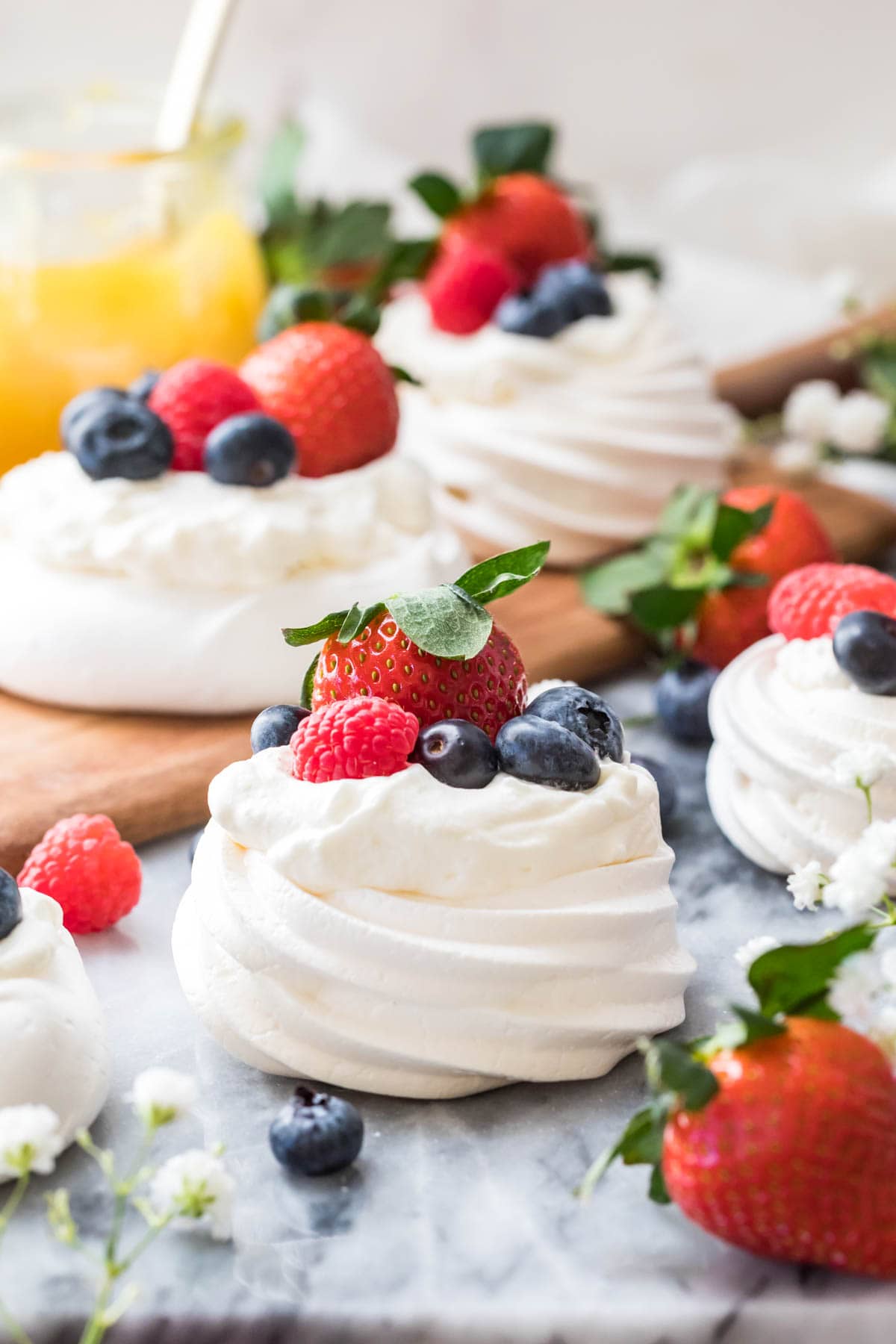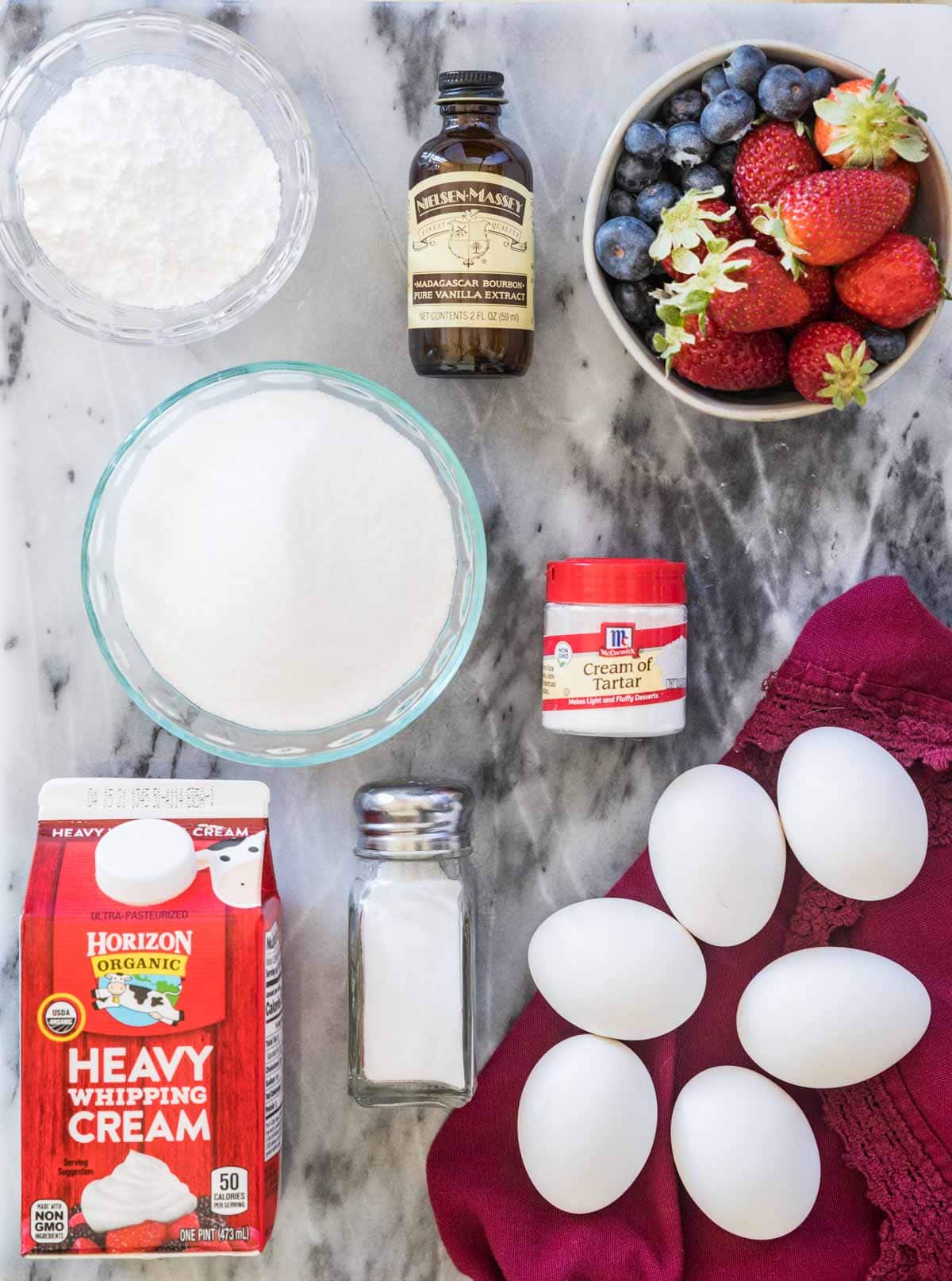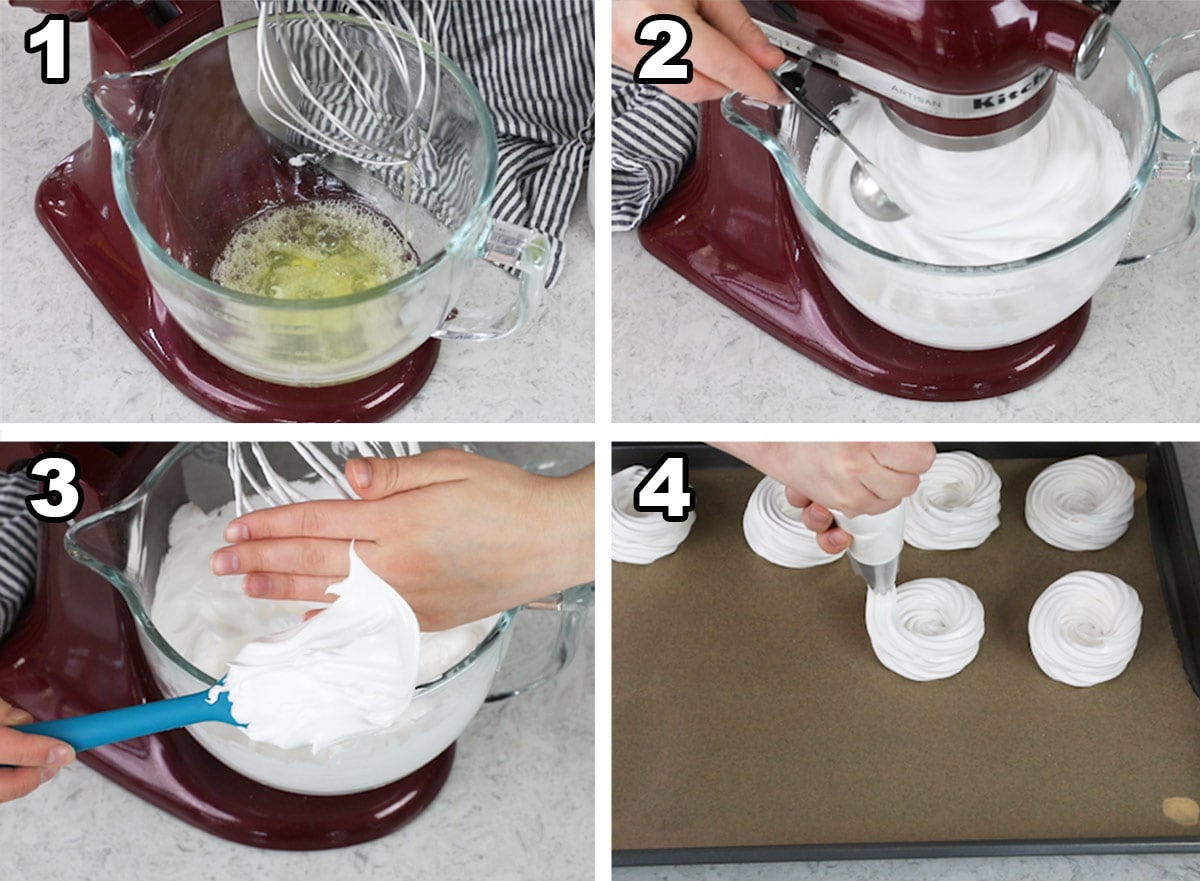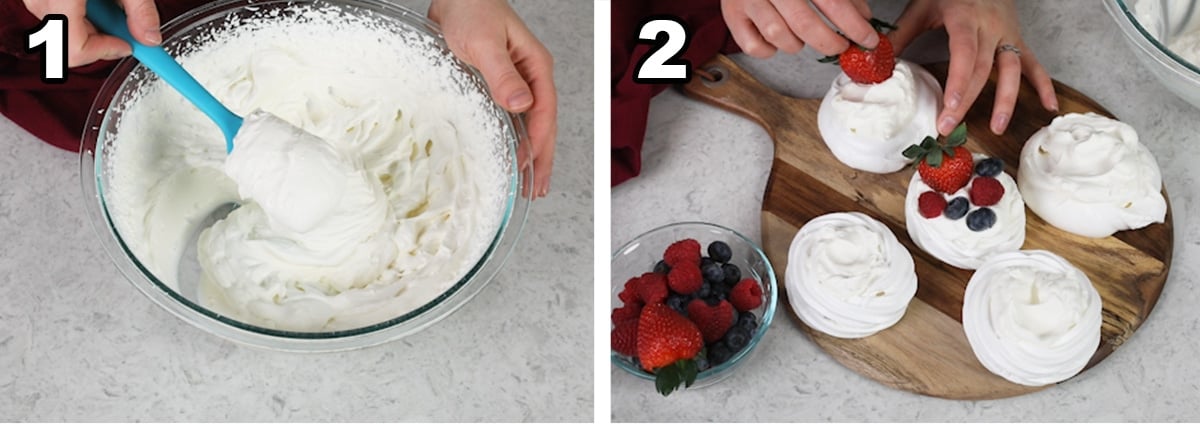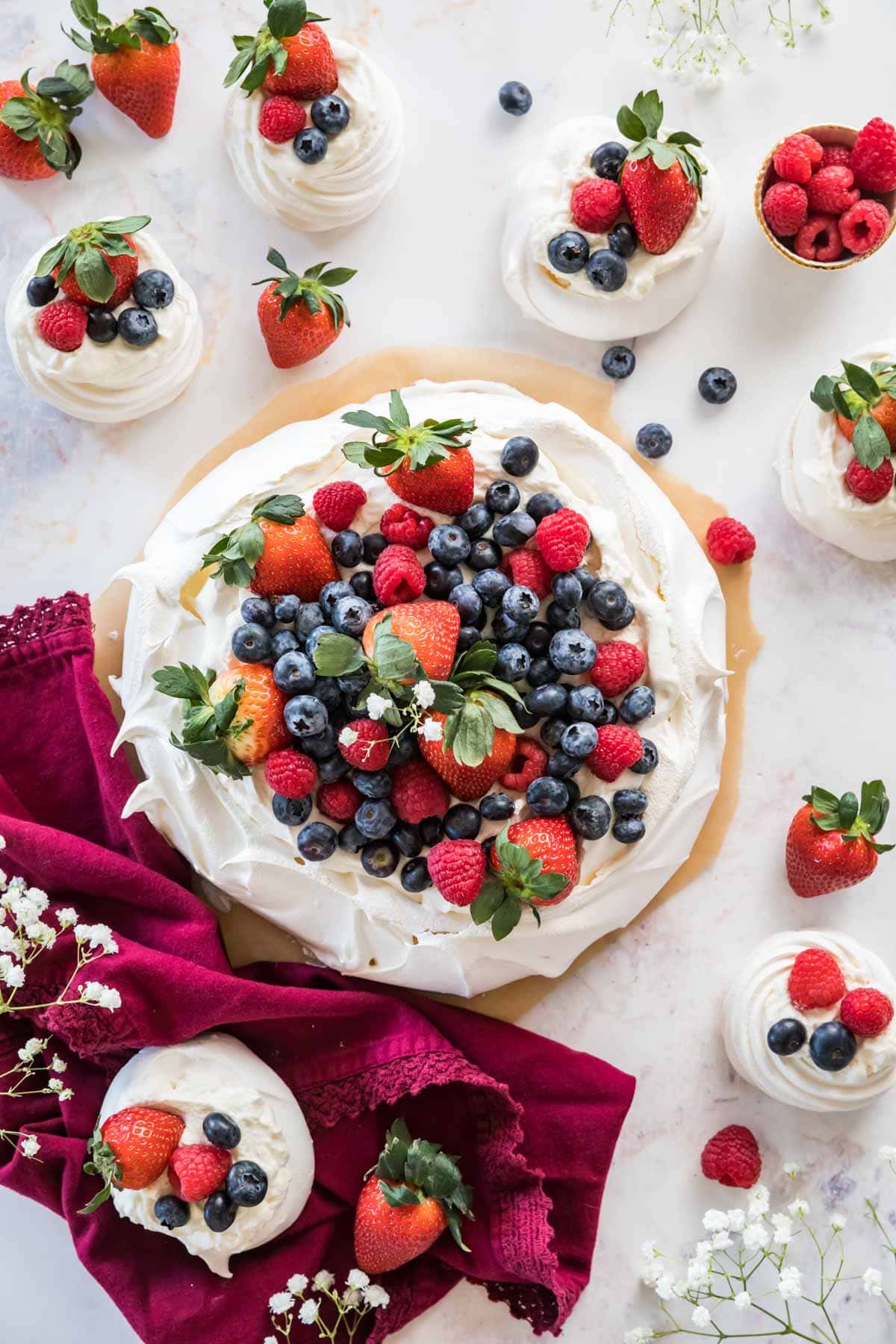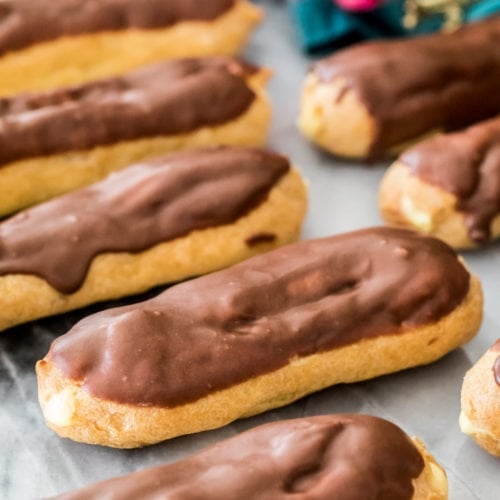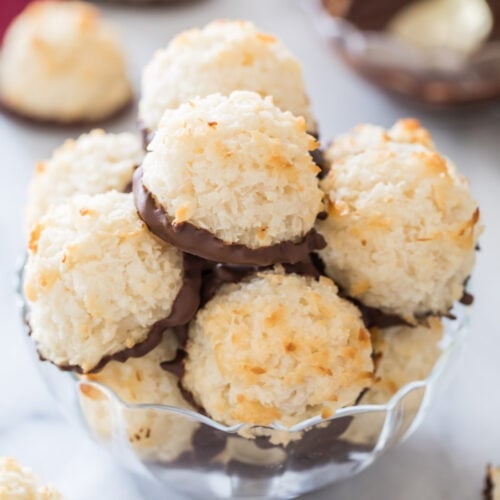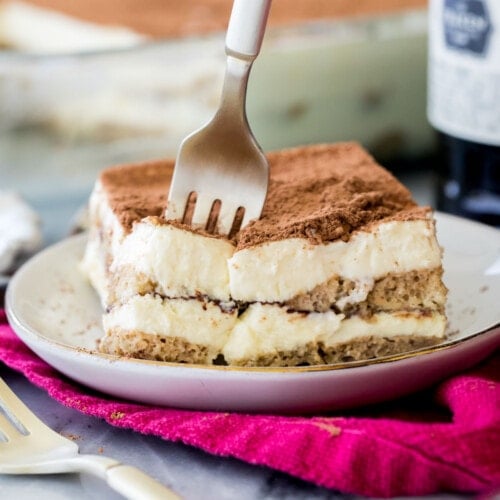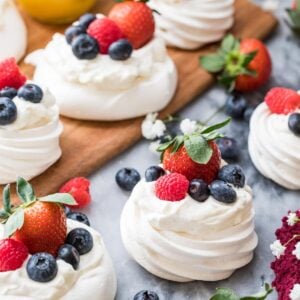All About Pavlova
If you can make meringue, you can make pavlova. If you can’t or haven’t made meringue before, then pavlova is one of the best, easiest places to start. A good meringue is the foundation for many recipes so it’s a good technique for any baker to have up their sleeve. Once you can master whipping egg whites to stiff peaks, you can conquer recipes like angel food cake, meringue cookies, Swiss meringue buttercream, and more (and if you’ve already made any of these, you’ll find today’s recipe surprisingly simple!). Like so many recipes (tres leches cake, anyone?) Pavlova has contested origins. Depending on who you ask, they’ll tell you pavlova was first made in either New Zealand or Australia, but they’ll agree that it was named after Russian prima ballerina Anna Pavlova. No matter the exact place of origin, pavlova (or mini pavlova!) is a light and airy, sophisticated and delectable invention that you’re going to love. It’s perfect year round but especially on a warm spring day. Its sweetness is tempered by juicy, tart fruits, its sticky but light interior is uniquely delicious and soft. Its flavor is extraordinary. Let’s get started.
What You Need (and Why!)
Classic and mini pavlovas are simple and sweet, and your mixer does most of the work. Here’s what you need:
Egg Whites. Room temperature egg whites are easier to whip and make it easier to achieve the stiff peaks that are needed to properly make the meringue.Cream of Tartar. This keeps the meringue stable and prevents pavlova from becoming weepy (just like it does in the topping of lemon meringue pie) after it’s baked. Many pavlova recipes use cornstarch, but thanks to the cream of tartar don’t find it to be necessary in my pavlova recipe.Salt. Added for flavor, but it also lends stability to the meringue (a recurring trend in our ingredients, you’ll see).Granulated Sugar. Sugar sweetens the pavlova and stabilizes the egg whites. Caster sugar/superfine sugar will work, but powdered will not. Unfortunately I am not familiar with sugar substitutes in this recipe and I don’t recommend reducing the sugar, since it’s so important for the structure.Vanilla Extract. This gives the pavlova a nice marshmallow-like flavor. I include notes in the recipe card if you’d like to use a different flavor, but take care that you never use one that contains oil, which can ruin the meringue. Classic vanilla that is brown in color will add a slight off-white tint to your meringue, so if you want to keep things snow-white use imitation clear vanilla extract.
SAM’S TIP: Quickly bring eggs to room temperature by placing in a bowl of warm (not hot!) water. Dry the eggs well before cracking them. If you get any water into the egg whites you will ruin your meringue! These ingredients comprise the meringue, but you’ll also need heavy cream and powdered sugar (with a splash of vanilla extract) to make homemade whipped cream, and fresh fruit for the topping. Lemon curd is another wonderful addition to layer over the pavlova and beneath the whipped cream (or take a dark and decadent route and use ganache).
Making The Pavlova
SAM’S TIP BEFORE YOU BEGIN: Make sure your equipment is completely free from grease or moisture, otherwise the eggs will not whip properly and the mini pavlovas will be flat or collapse.
Assembling Mini Pavlovas
More Recipes You Might Like
Enjoy! Let’s bake together! Make sure to check out the how-to VIDEO in the recipe card!

